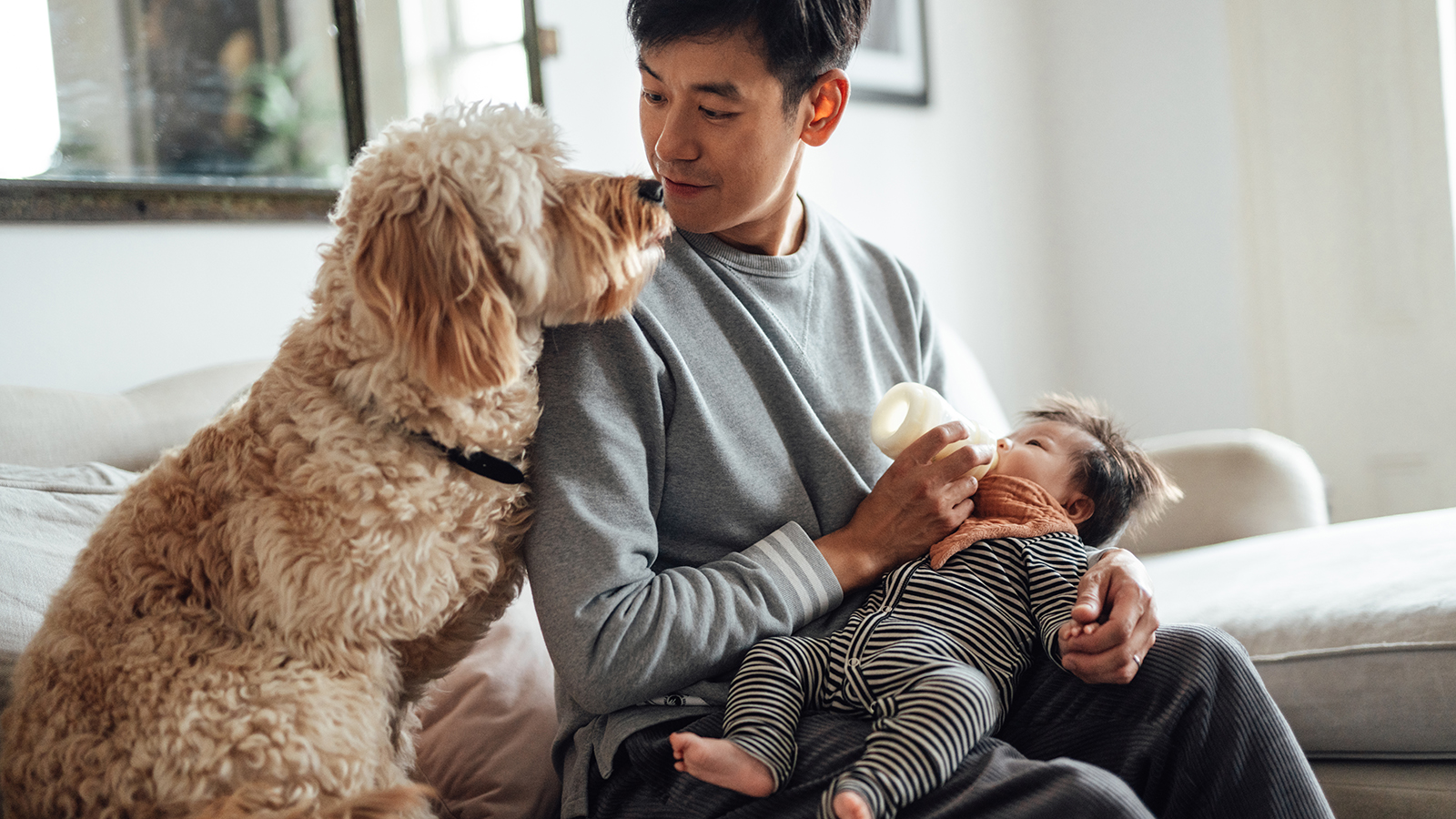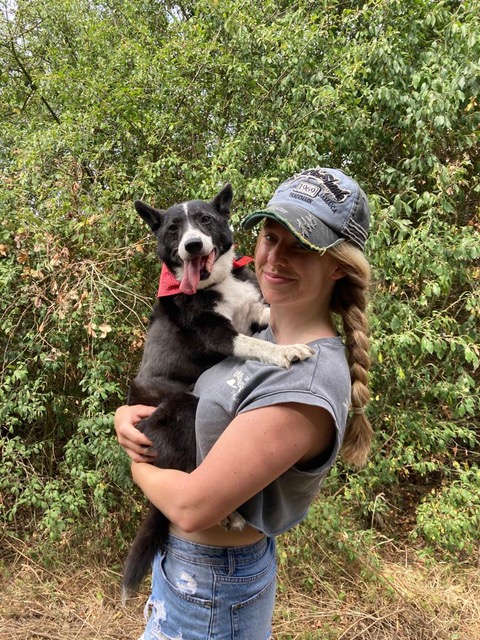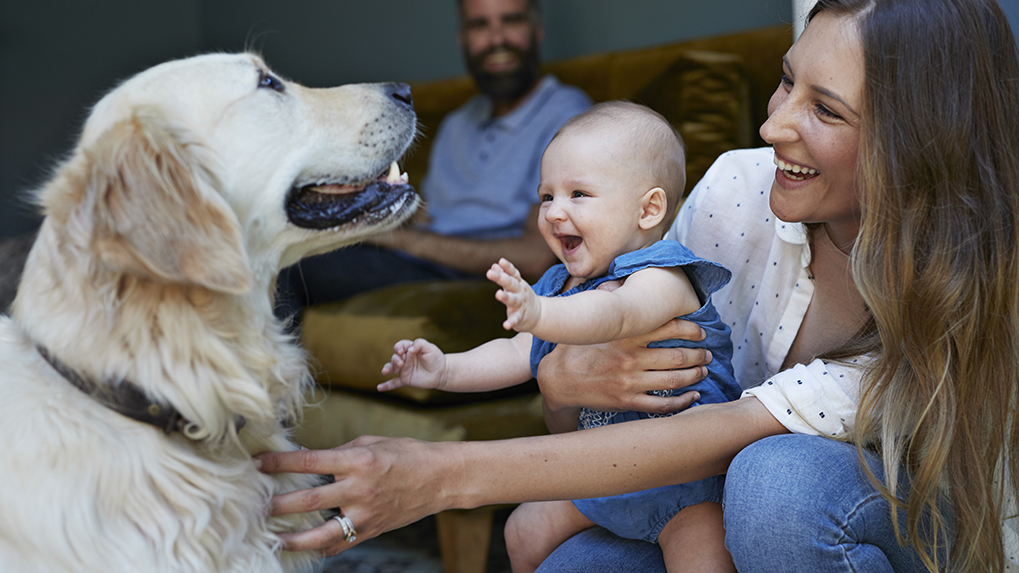How to introduce a dog to a baby
Discover how to introduce a dog to a baby with essential tips from a vet

How to introduce a dog to a baby can be a worrying thought for some. Whether you’re welcoming a new baby, or you’re already a parent to one and you’re bringing a dog home, you want your dog and your baby to be the best of friends, right?
At the same time, you’ll probably want to know how to introduce your dog to your baby safely, and in such a way that your dog feels comfortable and at ease around even the smallest humans. Best case scenario, you'll eventually be able to watch them play together with the best puppy toys.
Fortunately, introducing dogs to babies tends to be easier than tackling how to introduce cats and babies, because they’re more prone to stress and adverse to change than their canine counterparts.
Take things slow and gradual
According to Dr. Anna Foreman, vet at Everypaw, it’s important to expose your dog to your baby slowly and gradually, being aware of dog body language, no matter how friendly you know them to be.
When it comes to puppies, things are probably going to be easier, particularly if they spent their first eight weeks of life in a house with children. They’re “much easier to integrate into a pre-existing set-up,” says Dr. Foreman, “as much of their ‘learning’ phase will have been spent around children”.
But even if a puppy hasn’t met babies or children before, but they’ve been exposed to humans and seen their mother be comfortable around them, they’ll know that humans – big or small – aren’t a threat.
However, it can be more difficult to introduce dogs over the age of 16 weeks to babies, as they’ve already gone past the sensitive learning phase. They’ll take longer to adapt, with Dr. Foreman explaining that there’s a ‘rule of three’ with older dogs in particular.
Get the best advice, tips and top tech for your beloved Pets
“It takes three days to stop feeling acutely overwhelmed by a new home, three weeks to start to settle into a new routine, and three months for a dog to consider a new place home,” she says.

Anna works as a small animal vet in Hertfordshire, having graduated from the Royal Veterinary College. She loves surgery, and especially enjoys performing more complicated soft tissue and orthopedic procedures while studying towards her advanced surgical qualifications. Anna also works as a vet for Everypaw pet insurance, helping with claims queries and commenting on veterinary topics for many publications. Anna has several pets, including a bearded dragon and a tank of tropical aquatic life.
Make sure there’s a barrier in place
It’s important to put a barrier in place when you’re introducing a dog to a baby, regardless of whether the dog or the baby was ‘here’ first. This way, your pup can get to grips with the baby without any fight-or-flight reactions. Dr. Foreman recommends using a pheromonal spray as this can help to calm your dogs in these situations.
“Once the reaction of the dog has been gauged,” says Dr. Foreman, “an introduction can be made if appropriate.
“If the dog is interested in the baby and seems calm then the baby can be allowed to be sniffed by the dog. It is important to try and prevent the baby from grabbing the dog, and so if a baby starts to do so, have the space to move the baby away.”
Dealing with a nervous or unsure dog
If you have a more nervous dog, you should let them approach the baby rather than have the baby approach the dog. Have someone the dog is comfortable with hold the baby, and let the dog approach them.
They might not feel comfortable doing so right away – it could take a few sessions, but it’s worth sticking with it and not trying to rush as this could be counterproductive. Remember, safety always comes first.
“If the dog shows signs of aggression or is very scared, a few more sessions of barrier introduction should be performed to allow the dog to desensitize to the presence of the baby,” says Dr. Foreman.
“A dog may be startled or become upset if the baby cries too – if this occurs, quietly remove the baby from the room. It is important not to make the dog feel like they are being punished by removing them from the room, as this may make them adverse to the scenario even if going well.”
Be careful to ensure the baby – if a little older – doesn’t become too over-excited. An older baby or toddler may try to grab the dog, and this could lead to the dog feeling threatened or scared and responding in an aggressive manner.
And it might go without saying, but if you’re introducing a dog to a baby or toddler, make sure they’re supervised constantly to make sure the child doesn’t hurt the dog, and vice-versa.

Keep an eye on your pup’s behavior
There are plenty of viral videos of dogs and babies seemingly becoming best friends, and while dogs can form deeper bonds with babies than cats, this isn’t always the case. As Dr. Foreman explains, “It may take time to successfully introduce a dog to a child– they may not become best of friends and the dog may simply tolerate the child’s presence”.
When introducing your dog to a baby, or getting ready to do so, you should be on the lookout for signs of long-term stress in your pup, as this can lead to changes in behavior.
“If a dog already has behavioral issues, significant planning needs to go into introducing them to a new family member to prevent problems, says Dr. Foreman. “Although the ladder of aggression (dogs showing more subtle signs of fear such as turning their head away, lip licking or yawning before progressing to more overt signs of growling and biting) was a well-established model of dog behavior, it has been shown now that dogs will often turn to biting without warning when uncomfortable.”
When the dog arrived first
It tends to be easier to introduce a new baby to an established dog than vice-versa. Introducing a new dog to an established baby can be more difficult, just because babies can be unpredictable. To introduce a new baby to an established dog, the above advice is a good starting point.
Dr. Foreman recommends that new parents who want a dog too wait until their child is a little older before getting one. “It’s easier to introduce a new dog to older children who are more responsive to their parent’s instructions,” she explains, “A new parent may find it overwhelming to take on a new dog at the same time, whether it’s a puppy or an older dog – as both come with their challenges.”
As new parents are going to be busy with their new arrival, they may not have the time to dedicate to training and simply giving a new dog attention at the same time. So, it might be advisable to wait until your children are slightly older.

Adam is a freelance journalist specialising in pets, music and culture, and mental health and wellbeing. He investigates and writes the large majority of news on PetsRadar, and collaborates with veterinary experts to produce informative pet care content.
Adam has a journalism degree from Southampton Solent University and a masters degree in Magazine Journalism from Cardiff University. He was previously senior editor at dog advice website DogTime.com, and has also written for The Independent, GoodToKnow and Healthline.
He owns two rescue cats, Bunny and Dougie, and has also previously had a rabbit, fish and Roborovski dwarf hamsters.
